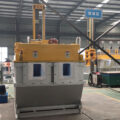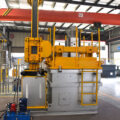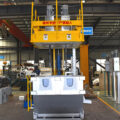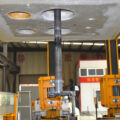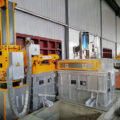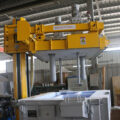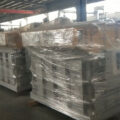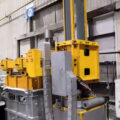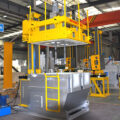Aluminium Degassing Devices are to spray inert gas into molten aluminum to remove hydrogen. In addition, degassing is also considered to be a very effective way to float impurities.
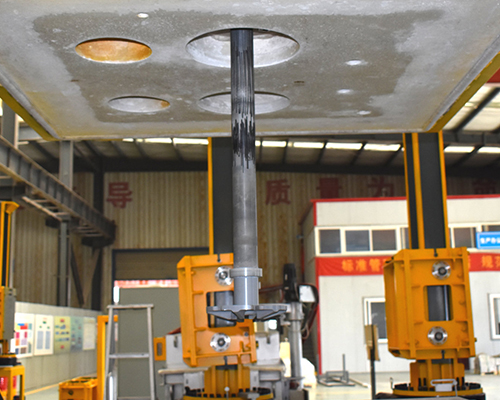
Due to the high vapor pressure of hydrogen, the dissolved hydrogen diffuses into the gas in the injected aluminum liquid. Theoretically, when an inclusion with a diameter of 10 microns contacts a bubble, it adsorbs on the bubble and floats to the surface of the liquid.
Rotors and turntables can change the traditional near-straight upward airflow into multiple spiral upward airflows, resulting in a more uniform dispersion of fine air bubbles in the molten aluminum, resulting in improved degassing.
The experimental verification shows that the bubbles generated by the turntable are small and evenly distributed, which achieves the most effective degassing and slag removal effect.
The material of the turntable is silicon nitride or graphite. The speed of the rotating turntable can be changed by a variable frequency motor, and the speed can be adjusted in the range of 0-900rpm to meet the needs of the process.
The key of Aluminium Degassing Devices is that the rotor can break up the large bubbles of inert gas into small bubbles and make them diffuse throughout the molten metal.
By reducing the bubble diameter, the surface area of the inert gas increases sharply, so that more inert gas surfaces are in contact with the hydrogen and impurities in the molten metal, and the hydrogen or impurities are removed from the molten aluminum as the bubbles rise.
The flow control of the inert gas entering the molten aluminum can be adjusted according to the volume of the metal liquid to be processed, and the speed of the rotating rod and the rotor can be adjusted to generate bubbles of appropriate size to facilitate the diffusion of the inert gas.
Both argon and nitrogen can be used as inert gases to degas molten aluminum. The purity of the inert gas must be above 99.99%.

